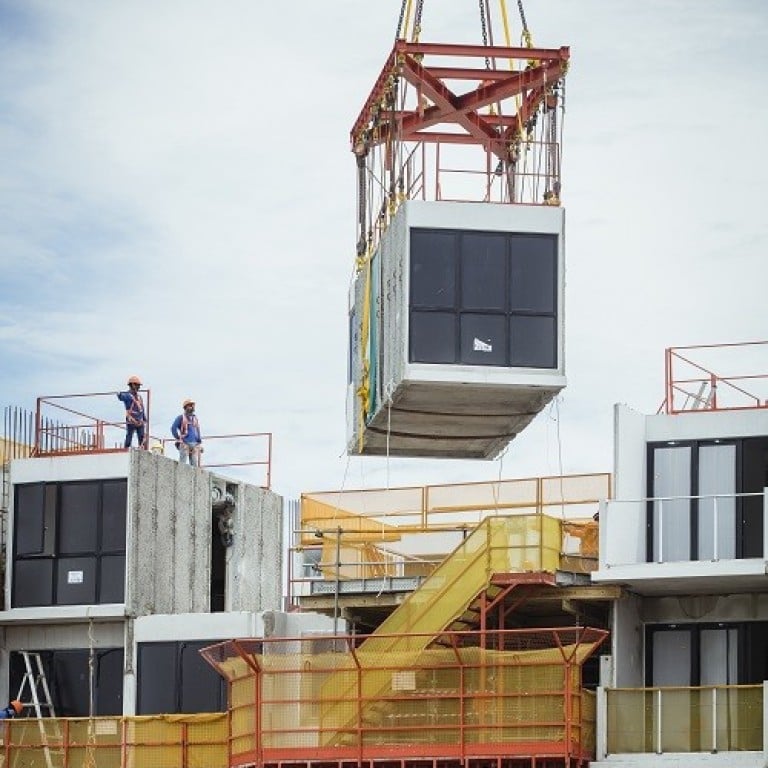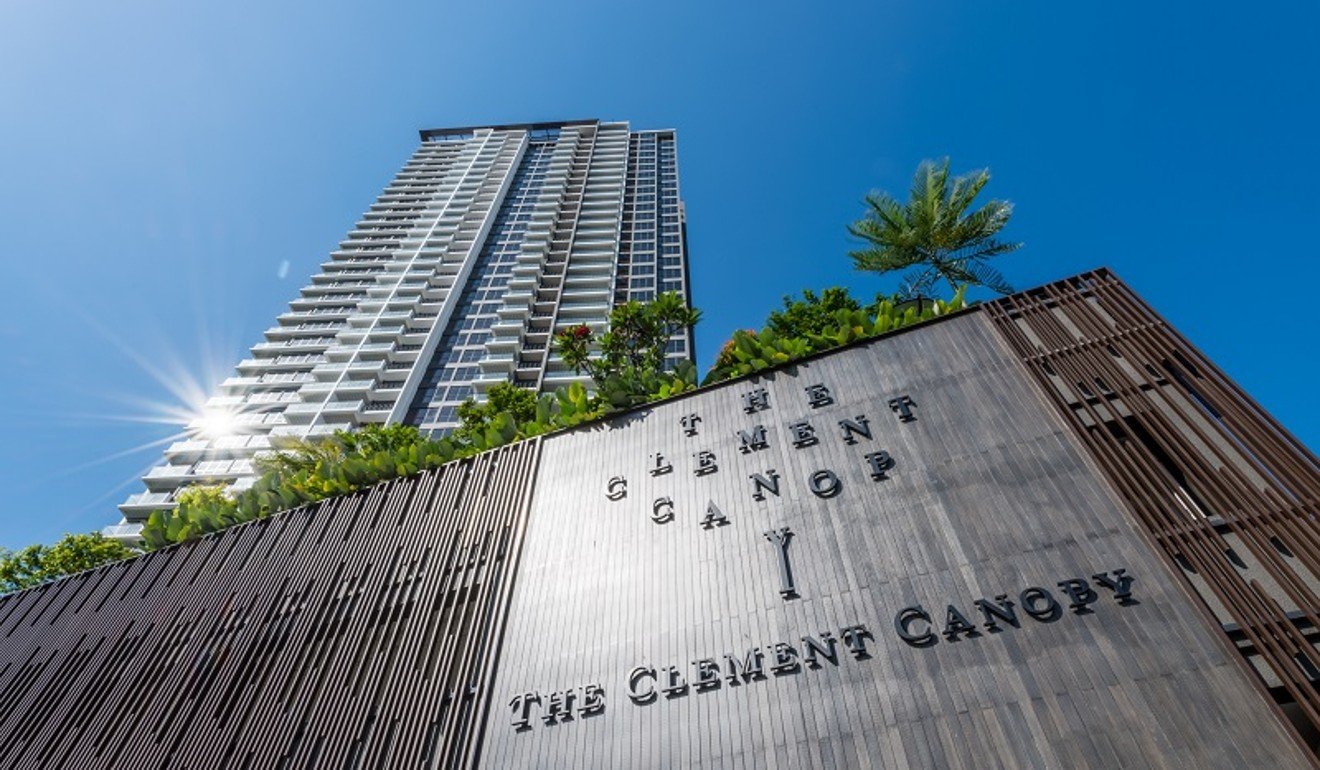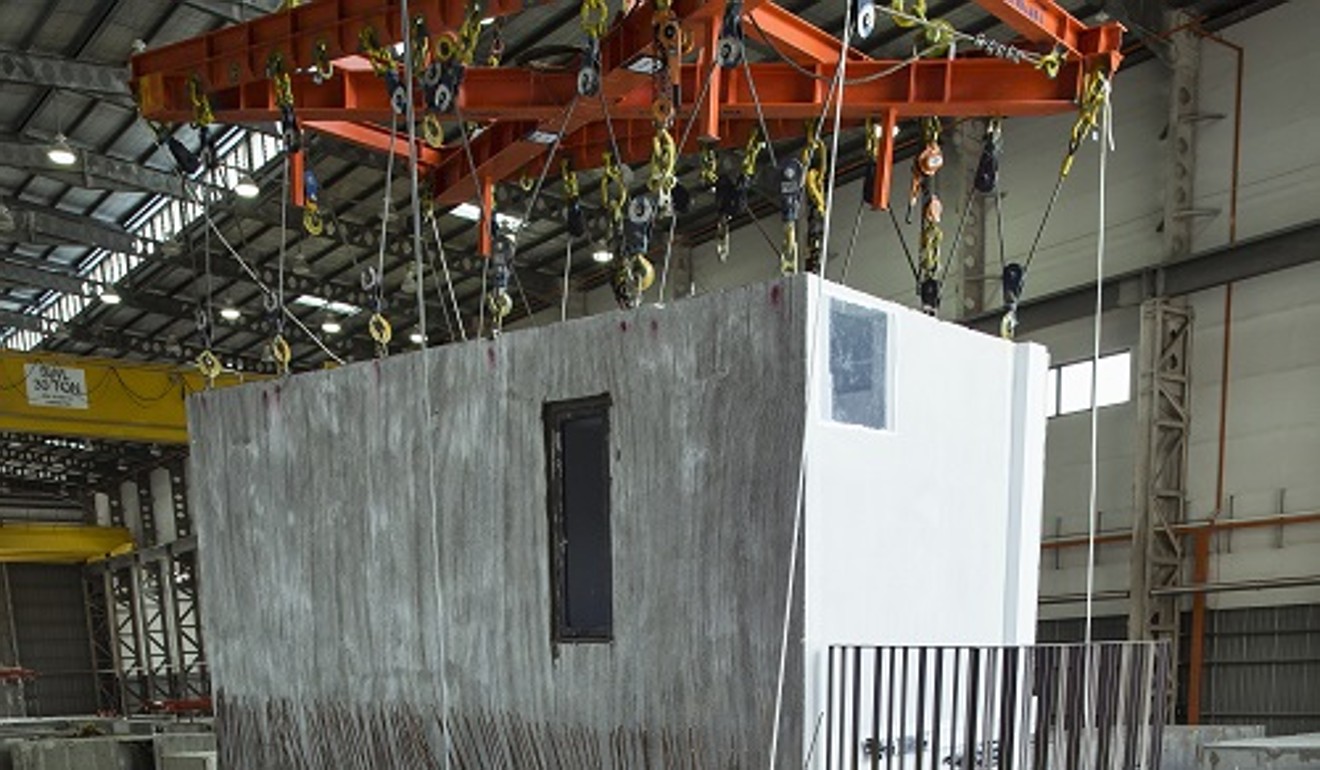
Singapore is embracing ‘Lego style’ prefabricated construction method for residential housing
- Using prefabricated volumetric construction, one residential development in Singapore was completed six months ahead of schedule
- Prefabricating modules at an off-site production facility can boost quality control, expert says
Standing 140 metres tall, the 40-storey residential twin towers of The Clement Canopy private condominium at Clementi Avenue 1 in Singapore are considered the world’s tallest concrete modular towers using the prefabricated volumetric construction (PPVC) method. The towers contain a total of 505 residential units that were fully sold and completed in the first quarter. The keys have been handed over to the owners, and some residents have already moved in.
Jointly developed by Singapore-listed UOL Group and United Industrial Corp (UIC), The Clement Canopy was completed about six months ahead of schedule.
Using conventional construction methods, the towers would have taken 30 to 36 months to complete. With the PPVC method, the construction cycle was reduced to 24 to 30 months, which means a 20 to 30 per cent time saving, according to Pierre-Eric Saint-Andreι, deputy CEO for Bouygues Batiment International.

Considered a world leader in modular construction, Bouygues Batiment International is the parent company of Dragages Singapore, the construction firm that built The Clement Canopy.
Since November 2014, Singapore’s Building and Construction Authority has stipulated that selected sites offered in the Government Land Sales (GLS) programme need to adopt the use of PPVC for at least 65 per cent of the total constructed floor area within residential developments.
For instance, four sites offered for sale under the GLS programme this year came with a PPVC requirement. These were the executive condo site at Clementi Avenue 1, where a joint venture between UOL and UIC emerged as the top bidder with a bid of S$491.3 million (US$361.38 million), or S$788 per square foot per plot ratio on July 3. Other sites included Tan Quee Lan Street, Bernam Street and one-north Gateway.

In more mature markets like Australia, the UK or the US, there is no difference in cost between modular and conventional construction, said Saint-Andre.
“In Singapore, PPVC is 5 to 10 per cent more expensive because we’re still at the start of the learning curve,” he said. “It’s a question of scale: We need [the other players] in the supply chain to move with us and to improve. Our objective is to be a game-changer in the industry and to do that means to be able to build at a lower cost. I believe in the very near future, it will be better.”
Aside from savings in terms of costs and time, modular construction also benefits the environment. The Clement Canopy, for example, is located next to Nan Hua High School and NUS High for Science and Mathematics. “When we started piling, it was quite painful,” said Julien Esch, managing director of Dragages Singapore. “The headmasters of the schools would call and ask us to do something about the noise. We said we’d try but we are not magicians. But as soon as piling was completed, there were no more complaints because modular construction requires fewer heavy trucks and there is almost no noise during assembly on-site.”

In modular construction, the carcass of the building and the modules are completed in an off-site factory before they are transported to the site and assembled. “It’s just like building with Lego,” said Esch. Lifting operations to hoist the modules into place are less noisy and dusty than traditional construction methods, he said.

Another benefit of modular construction is consistent high quality, as up to 85 per cent of the interior finishings and fittings in each module are completed in a controlled environment at an off-site production facility. This includes plumbing, tiling and waterproofing works, wall finishes and painting, installation of electrical outlets, and the installation of air-conditioning units, as well as doors and window frames. Other finishing work completed off site includes the installation of wooden flooring, kitchen cabinets and bathroom units. “As such, we can monitor the work and control the outcome,” said Esch.
(Corrects July 8 story to say six months ahead of schedule, instead of 21 months)

